Related Research Articles
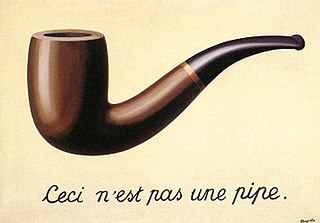
Surrealism is an art and cultural movement that developed in Europe in the aftermath of World War I in which artists aimed to allow the unconscious mind to express itself, often resulting in the depiction of illogical or dreamlike scenes and ideas. Its intention was, according to leader André Breton, to "resolve the previously contradictory conditions of dream and reality into an absolute reality, a super-reality", or surreality. It produced works of painting, writing, theatre, filmmaking, photography, and other media as well.

Salvador Domingo Felipe Jacinto Dalí i Domènech, Marquess of Dalí of Púbol, known as Salvador Dalí, was a Spanish surrealist artist renowned for his technical skill, precise draftsmanship, and the striking and bizarre images in his work.
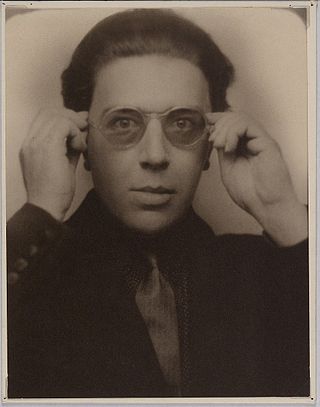
André Robert Breton was a French writer and poet, the co-founder, leader, and principal theorist of surrealism. His writings include the first Surrealist Manifesto of 1924, in which he defined surrealism as "pure psychic automatism".

Meshes of the Afternoon is a 1943 American experimental silent short film directed by and starring wife-and-husband team, Maya Deren and Alexandr Hackenschmied.
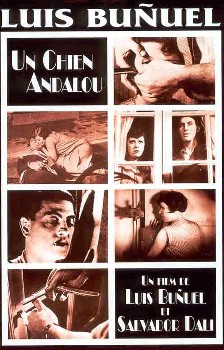
Un Chien Andalou is a 1929 French- Spanish surrealist silent short film directed, produced and edited by Spanish filmmaker Luis Buñuel, who also co-wrote the screenplay with Spanish surrealist painter Salvador Dalí. Buñuel's first film, it was initially released in a limited capacity at Studio des Ursulines in Paris, but became popular and ran for eight months.

Luis Buñuel Portolés was a Spanish and Mexican filmmaker who worked in France, Mexico, and Spain. He has been widely considered by many film critics, historians, and directors to be one of the greatest and most influential filmmakers of all time. Buñuel’s works were known for their avant-garde surrealism which were also infused with political commentary.
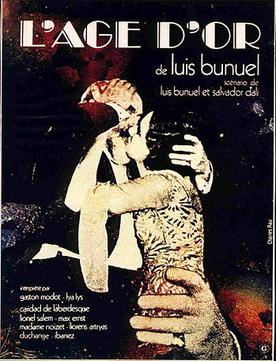
L'Age d'Or, commonly translated as The Golden Age or Age of Gold, is a 1930 French surrealist satirical comedy film directed by Luis Buñuel about the insanities of modern life, the hypocrisy of the sexual mores of bourgeois society, and the value system of the Catholic Church. Much of the story is told with title cards like a predominantly silent film. The screenplay is by Buñuel and Salvador Dalí. L'Age d'Or was one of the first sound films made in France, along with Miss Europe and Under the Roofs of Paris.
The Surrealist Manifesto refers to a collection of several publications between Yvan Goll and André Breton, prior leaders of the rival Surrealist groups. Goll and Breton had both originally published manifestos in October 1924 titled Manifeste du surréalisme. Breton later wrote a second in 1929, publishing it the following year, with his third manifesto in 1942.
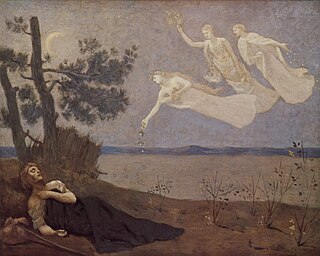
Dream art is any form of art that is directly based on a material from one's dreams, or a material that resembles dreams, but not directly based on them.
The paranoiac-critical method is a surrealist technique developed by Salvador Dalí in the early 1930s. He employed it in the production of paintings and other artworks, especially those that involved optical illusions and other multiple images. The technique consists of the artist invoking a paranoid state. The result is a deconstruction of the psychological concept of identity, such that subjectivity becomes the primary aspect of the artwork.

La Révolution surréaliste was a publication by the Surrealists in Paris. Twelve issues were published between 1924 and 1929.
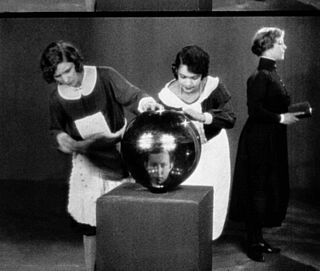
The Seashell and the Clergyman is a 1928 French experimental film directed by Germaine Dulac, from an original scenario by Antonin Artaud. It premiered in Paris on 9 February 1928. The film is associated with French Surrealism.
Le Surréalisme au service de la révolution was a periodical issued by the Surrealist Group in Paris between 1930 and 1933. It was the successor of La Révolution surréaliste and preceded the primarily surrealist publication Minotaure.

Women Surrealists are women artists, photographers, filmmakers and authors connected with the surrealist movement, which began in the early 1920s.
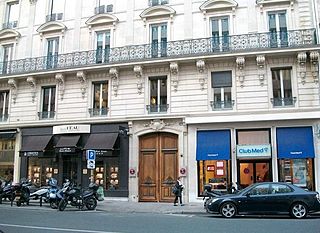
The Exposition Internationale du Surréalisme was an exhibition by surrealist artists that took place from January 17 to February 24, 1938, in the generously equipped Galérie Beaux-Arts, run by Georges Wildenstein, at 140, Rue du Faubourg Saint-Honoré in Paris. It was organised by the French writer André Breton, the surrealists' brain and theorist, and Paul Éluard, the best known poet of the movement. The catalogue listed, along with the above, Marcel Duchamp as generator and arbitrator, Salvador Dalí and Max Ernst as technical advisers, Man Ray as head lighting technician and Wolfgang Paalen as responsible for the design of the entrance and main hall with "water and foliage". The exhibition was staged in three sections, showing paintings and objects as well as unusually decorated rooms and mannequins which had been redesigned in various ways. With this holistic presentation of surrealist art work the movement wrote exhibition history.
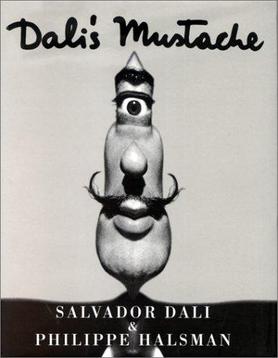
Dali's Mustache is an absurdist humorous book by the surrealist artist Salvador Dalí (1904–1989) and his friend, the photographer Philippe Halsman (1906–1979). The first edition was published in October 1954 in New York; slightly modified French editions followed in the 1980s and 1990s.
André Thirion was a French writer, a member of the group of surrealists, a theorist and political activist.

Luis Buñuel Portolés was a Spanish filmmaker who worked in Spain, Mexico and France. Buñuel is noted for his distinctive use of mise-en scene, distinctive sound editing, and original use of music in his films. Often Buñuel applies the techniques of mise-en-scène to combine multiple single scenes within a film directed by him to represent more encompassing aspects of the film when viewed as a whole.

Avida is a 2006 French black comedy film written and directed by Benoît Delépine and Gustave Kervern. Shot in black-and-white, the film uses surreal humour and features little dialogue.
References
- ↑ André Breton, Complètes, T. I, ed. Marguerite Bonnet (Œuvres Paris: Gallimard, 1988), 51-105.
- ↑ Breton, André; Parinaud, André (1993). Conversations: The Autobiography of Surrealism. Translated by Polizzotti, Mark. Paragon House. p. 43. ISBN 978-1-55778-423-0.
- ↑ As agreed by interviewer and interviewee. Breton and Parinaud, 71
- ↑ Em Gee Film Library, Catalog 83 (no date) Murray Glass, Editorial assistant Rhoda Friedman
- ↑ Buñuel, Luis (2003). My Last Sigh. University of Minnesota Press. ISBN 978-0-8166-4387-5.
- ↑ "Commentary: Bergman on Filmmakers". Bergmanorama. Archived from the original on 2012-11-02.
- 1 2 3 Richardson, Michael (March 2006). Surrealism and Cinema. Berg Publishers. ISBN 978-1-84520-226-2.
- 1 2 3 4 5 6 7 8 9 10 11 12 Matthews, John Herbert (1971). Surrealism and Film. University of Michigan Press. ISBN 978-0-608-16941-5.
- 1 2 3 4 5 Kovács, Steven (1980). From Enchantment to Rage: The Story of Surrealist Cinema. Fairleigh Dickinson. ISBN 978-0-8386-2140-0.
- 1 2 3 4 Matthews, John Herbert (1971). "Preface". Surrealism and Film. University of Michigan Press. pp. vii–ix. ISBN 978-0-608-16941-5.
- 1 2 3 Ezzone, Gina Marie (July 21, 2014). "Surrealist Cinema and the Avant-Garde". Facets Features Blog. Facets Features.
- 1 2 3 4 5 6 Short, Robert (2003). The Age of Gold: Surrealist Cinema. Creation Books. ISBN 978-1-84068-059-1.
- 1 2 Gould, Michael (1976). Surrealism and the cinema: (open-eyed screening). A. S. Barnes. ISBN 978-0-498-01498-7.
- 1 2 3 4 5 Williams, Linda (1981). Figures of desire: a theory and analysis of surrealist film. University of Illinois Press. ISBN 978-0-252-00878-8.
- 1 2 3 Moine, Raphaëlle; Taminiaux, Pierre (2006). "Surrealist Cinema to Surrealism in Cinema: Does a Surrealist Genre Exist in Film?". Yale French Studies (109): 98–114. JSTOR 4149288.
- ↑ "Spellbound". Salvador Dalí Foundation. Archived from the original on 20 July 2016. Retrieved 25 May 2019.
{{cite web}}: CS1 maint: unfit URL (link), Fundació Gala-Salvador Dalí, VEGAP, 2014 - ↑ Meshes of the Afternoon
- ↑ "Czech Filmmaker Jan Svankmajer Launches Indiegogo Campaign for Final Film 'Insects'". 25 May 2016.
- ↑ Eggener, Keith L (1993). "'An Amusing Lack of Logic': Surrealism and Popular Entertainment". American Art. 7 (4): 31–45. doi:10.1086/424200. JSTOR 3109152. S2CID 193225170.
- ↑ Sobczynski, Peter (11 Apr 2016). "Defying Explanation: The Brilliance of David Lynch's "Eraserhead"". Roger Ebert Demanders Archive.
- ↑ "Lost Highway at 20 Years". www.thefourohfive.com. Archived from the original on 2017-05-11.
- ↑ Connelly, Thomas (March 2011). "Twin Peaks: Surrealism, Fandom, Usenet and X-ray Television" (PDF). Culture Critique. Claremont, California: Claremont Graduate University. 2 (1): Preface, 1–28. Archived from the original (PDF) on 10 January 2014. Retrieved 16 November 2012.
- ↑ Ebert, Roger (June 2001). "Mulholland Drive". Chicago Sun-Times. Archived from the original on 2 October 2012. Retrieved 16 November 2012.
- ↑ "El Topo". BFI Film & TV Database. London: British Film Institute. Archived from the original on July 22, 2013. Retrieved December 30, 2012.
- ↑ "10 Reasons Why "The Holy Mountain" is the Best Surreal Movie Ever".
- ↑ Cavett Binion (2016). "Dr. Caligari". Movies & TV Dept. The New York Times . Archived from the original on 2016-03-05.
- ↑ Davidson, Douglas (2022-05-05). "Paranoia seeps through every frame of surrealist, absurdist sci-fi thriller "Friend of the World."". Elements of Madness. Retrieved 2023-04-12.
- ↑ Daily, Max Michalsky For the (30 October 2017). "Artist spotlight: The touching surrealism of Charlie Kaufman". The Michigan Daily. Retrieved 2020-12-09.
- ↑ "Charlie Kaufman: exploring existential concepts through mindfuck surrealism". HERO magazine. Retrieved 2020-12-09.